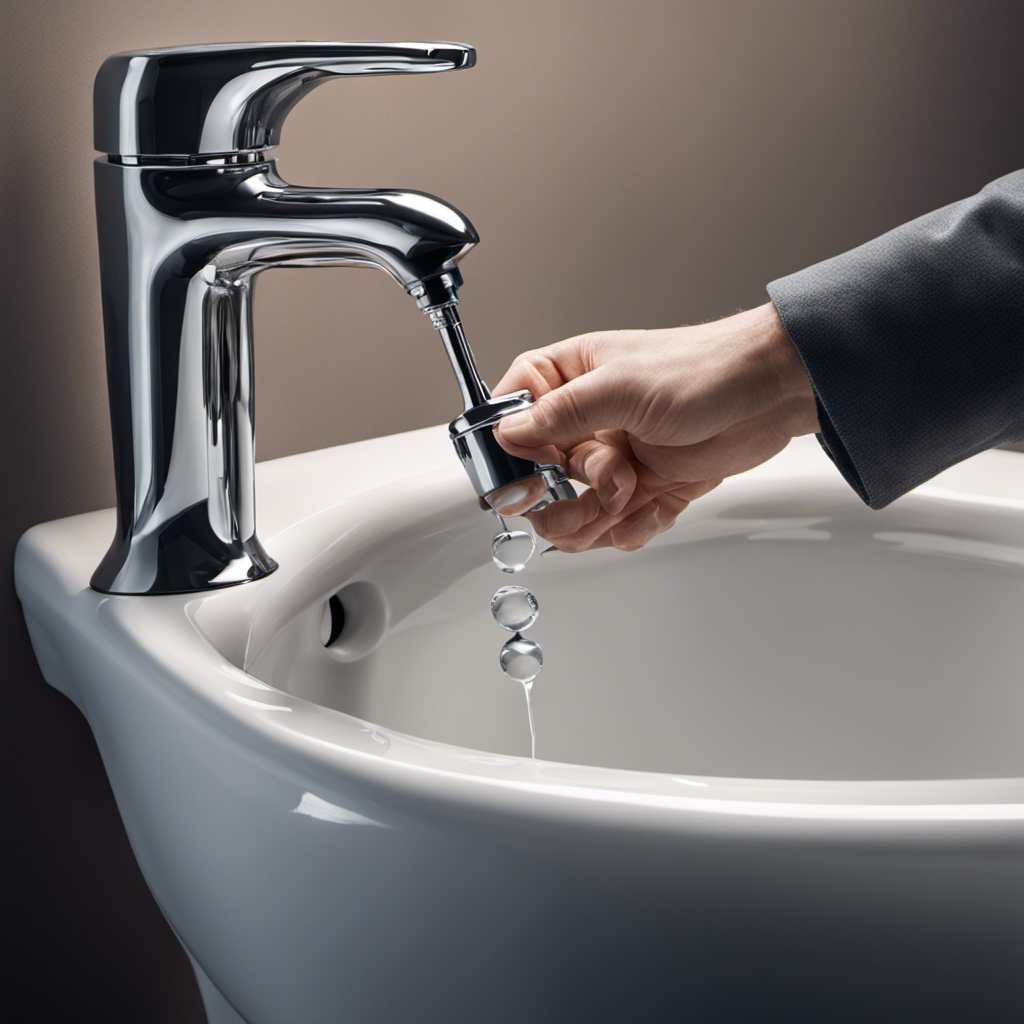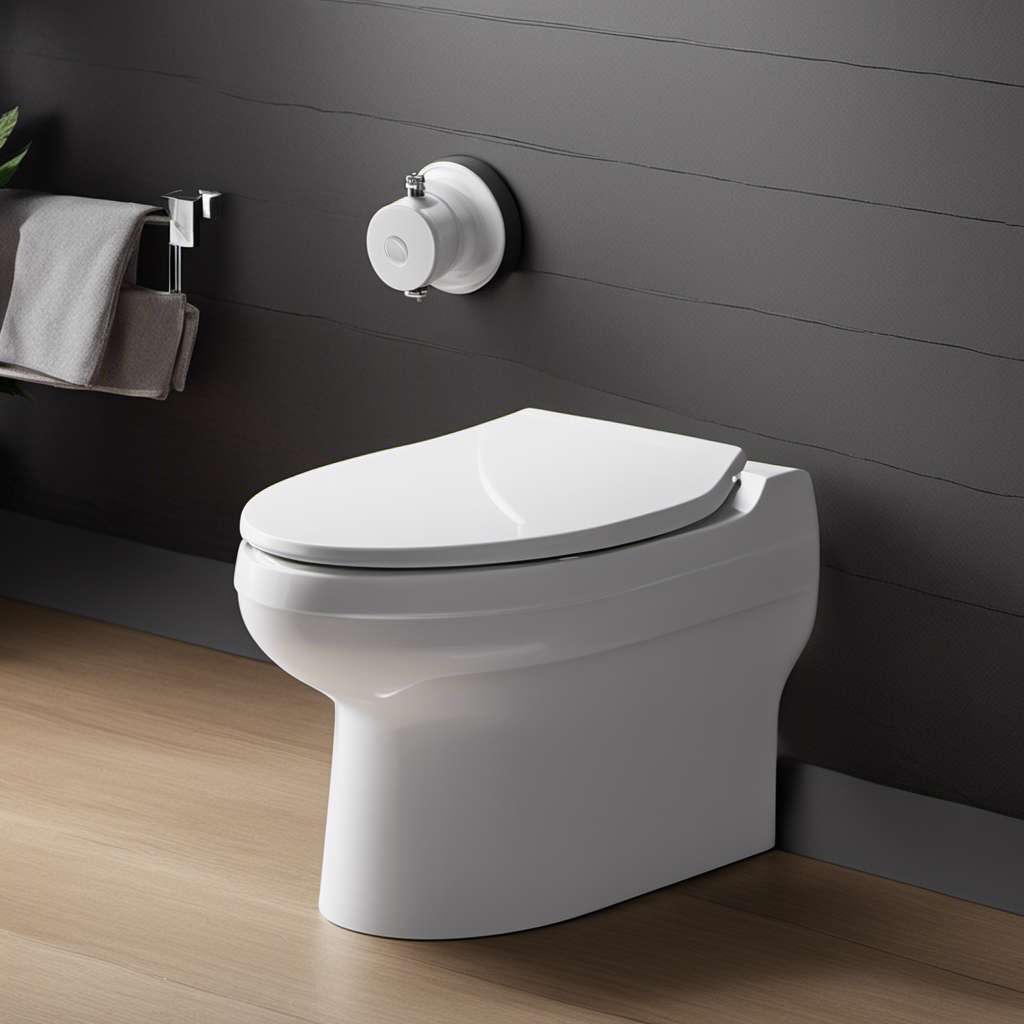I’m here to share with you the secrets of stopping a toilet from running.
Picture this: you’re in your bathroom, and the sound of water endlessly flowing fills the air. It’s not just an annoyance, it’s like a constant reminder of wasted resources.
But fear not, for I have the knowledge to fix this pesky problem. In this article, we’ll explore the common causes of a running toilet and guide you through the technical steps of identifying and fixing the issues.
Let’s put an end to that relentless flow and restore peace in your bathroom.
Key Takeaways
- Common causes of a running toilet include a faulty flapper, faulty fill valve, cracked tank or bowl, and loose or damaged supply line.
- Understanding the water supply system in toilets involves knowing about the water supply line, fill valve, and flush valve.
- Preventing toilet water waste can be done by checking for leaks or cracks, cleaning the supply line filter, installing a dual flush system or low-flow toilet, and using a toilet tank bank or filled water bottle.
- To fix a flapper valve issue, steps include flapper valve replacement, troubleshooting for wear and tear, checking chain length, and ensuring proper alignment.
Common Causes of a Running Toilet
One of the most common causes of a running toilet is a faulty flapper. The flapper is a rubber valve that controls the flow of water from the tank into the bowl. When it becomes worn or damaged, it may not seal properly, leading to water continuously flowing into the bowl.
Other causes of toilet leaks can include a faulty fill valve, a cracked tank or bowl, or a loose or damaged supply line. Troubleshooting a running toilet involves identifying the source of the problem and taking appropriate steps to fix it. This may include replacing the flapper, adjusting the fill valve, or tightening connections.
Regular maintenance and inspection can help prevent these issues and ensure a properly functioning toilet.
Understanding the Water Supply System in Toilets
Understanding the water supply system in toilets is essential for preventing toilet water waste.
The basics of toilet water supply include the water supply line, fill valve, and flush valve.
Toilet Water Supply Basics
To stop a toilet from running, you should check if the water supply valve is fully open. This valve controls the flow of water into the toilet tank. If it’s only partially open, it can result in low toilet water pressure, causing the toilet to run continuously.
Maintaining the toilet water supply line is crucial to prevent any issues. Here are some points to consider:
- Regularly inspect the water supply line for any leaks or cracks, as this can affect the water pressure.
- Clean the supply line filter to remove any debris or sediment that may reduce water flow.
- Ensure that the water supply valve is fully open to allow maximum water flow to the toilet.
Preventing Toilet Water Waste
Make sure to regularly check and fix any leaks or cracks in the toilet water supply line to prevent unnecessary water waste.
Toilet water conservation is an important aspect of water-saving strategies in households. By ensuring that the water supply line is free from leaks or cracks, you can avoid continuous water flow and reduce water wastage.
To prevent toilet water waste, it’s also advisable to install a dual flush system or a low-flow toilet. These fixtures help in minimizing water usage by allowing you to choose between a full flush or a partial flush, depending on the waste.
Additionally, using a toilet tank bank or placing a filled water bottle in the toilet tank can displace water, reducing the amount used per flush.
Identifying and Fixing a Flapper Valve Issue
When it comes to fixing a flapper valve issue in a toilet, there are certain steps that need to be followed for a successful replacement. Understanding these steps is crucial in order to effectively address common problems associated with flapper valves.
In this discussion, I will guide you through the flapper valve replacement process and highlight some of the most common issues that can occur with flapper valves.
Flapper Valve Replacement Steps
Replacing the flapper valve is a simple way to fix a running toilet. The flapper valve is responsible for preventing water from continuously flowing into the toilet bowl. If it is not functioning properly, it can lead to a constant sound of running water and wasted water.
Here are the steps to replace the flapper valve:
- Turn off the water supply to the toilet.
- Flush the toilet to drain the water from the tank.
- Remove the old flapper valve by disconnecting it from the flush chain and removing any attachment screws.
- Install the new flapper valve by attaching it to the flush chain and securing any attachment screws.
- Turn on the water supply and test the toilet to ensure that it no longer runs.
Common Flapper Valve Problems
One common issue with flapper valves is that they can become worn out and cause water leakage. Flapper valve maintenance is essential to prevent this problem.
To troubleshoot flapper valve issues, start by inspecting the flapper for signs of wear and tear. Look for cracks, tears, or any damage that may be preventing a tight seal.
If the flapper appears to be in good condition, check the chain length. If it’s too short or too long, it can affect the flapper’s performance.
Additionally, ensure that the flapper is properly aligned and centered over the flush valve opening.
If none of these steps resolve the issue, it may be necessary to replace the flapper valve altogether.
Regular maintenance and troubleshooting can help keep your flapper valve functioning properly and prevent water leakage.
Adjusting the Water Level in the Toilet Tank
To adjust the water level in your toilet tank, you can simply turn the screw on the float valve. The float valve, also known as the fill valve, is responsible for controlling the water level in the tank. By adjusting the float mechanism, you can ensure that the tank fills to the desired level and stops when it reaches that point.
Troubleshooting the fill valve is an important step in preventing water wastage and avoiding potential damage to your toilet.
Here are three emotional responses you may experience while adjusting the water level in your toilet tank:
- Relief: Finally, I can stop that annoying running sound and save water!
- Satisfaction: I feel accomplished knowing that I can fix this problem on my own.
- Confidence: I now have the knowledge and skills to tackle future toilet issues.
Fixing a Faulty Fill Valve
When fixing a faulty fill valve, you can start by checking for any leaks or cracks in the valve. The fill valve is an essential component of the toilet’s flushing system, responsible for refilling the tank after each flush.
If you notice that your toilet is constantly running or the water level in the tank is not reaching the proper level, it could be a sign of a faulty fill valve. Troubleshooting a fill valve involves inspecting it for any damage, such as leaks or cracks, and replacing it if necessary.
Additionally, you should also check if the float arm is properly adjusted, as an incorrectly positioned float arm can cause the fill valve to malfunction.
Dealing With a Stuck Float Ball or Float Cup
Check if the float ball or float cup in the toilet tank is stuck, as this can prevent the fill valve from properly shutting off the water flow. When dealing with a stuck float ball or float cup, it’s important to troubleshoot toilet water leaks.
Here are some emotional responses that may arise when facing this issue:
- Frustration: Discovering a leaking toilet can be frustrating, especially if it’s causing a higher water bill or constant noise.
- Anxiety: The fear of causing further damage or not being able to fix the problem can lead to anxiety.
- Relief: Successfully stopping a toilet from running can bring a sense of relief, knowing that the issue has been resolved.
To tackle this problem, first, turn off the water supply valve to the toilet. Then, check if the float ball or float cup is stuck by gently lifting it up. If it is stuck, try cleaning it or adjusting the position. If it still doesn’t work, consider replacing the float ball or float cup to ensure proper functioning of the fill valve and prevent future water leaks.
Replacing the Toilet Flush Handle or Chain
If the toilet flush handle or chain is broken, you’ll need to replace it with a new one. The toilet flush mechanism consists of several components, including the flush handle, chain, and flapper. When these parts are not functioning properly, it can lead to a variety of issues, such as a weak flush or a toilet that won’t flush at all.
Troubleshooting the toilet flush is essential in identifying the problem and determining the necessary solution. To replace the flush handle or chain, start by turning off the water supply and emptying the tank. Remove the old handle or chain and install the new one, ensuring it is securely attached.
Conclusion
Well, congratulations! You’ve made it to the end of this enlightening journey on how to stop a toilet from running.
Armed with the knowledge of common causes and the inner workings of your toilet’s water supply system, you are now equipped to tackle any running toilet situation.
From fixing flapper valve issues to adjusting water levels and dealing with faulty fill valves, you’ve become a veritable toilet whisperer.
So go forth, my friend, and may your toilets never run again!










